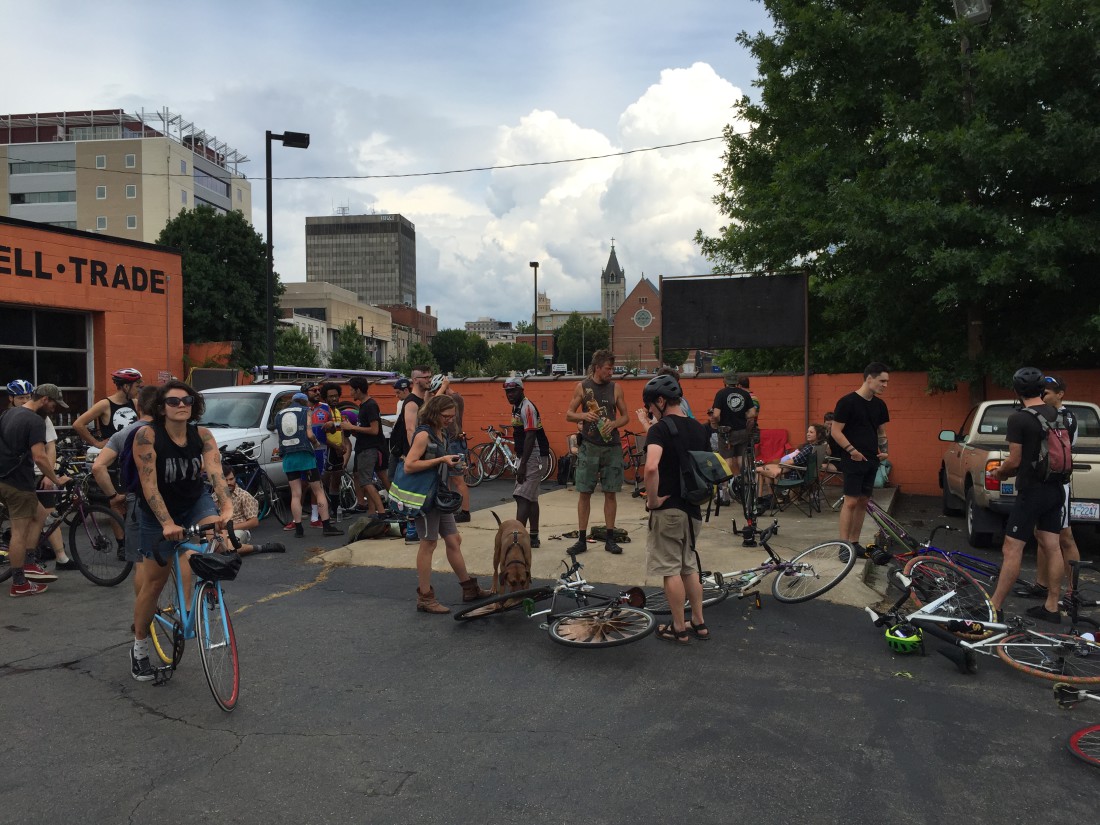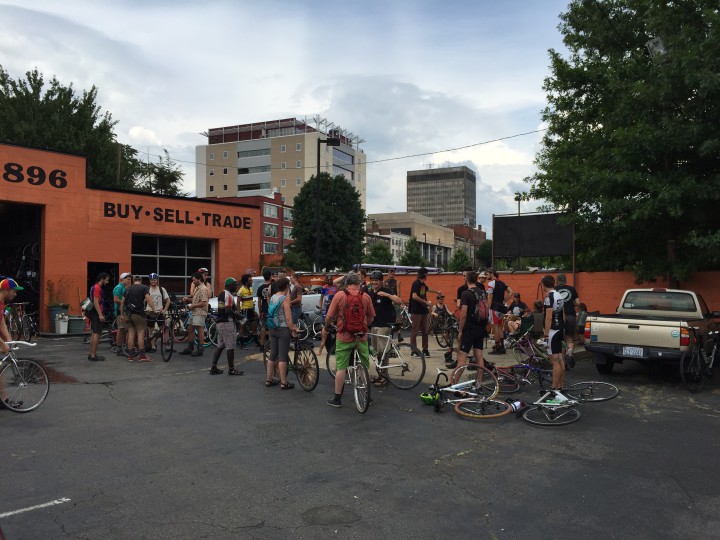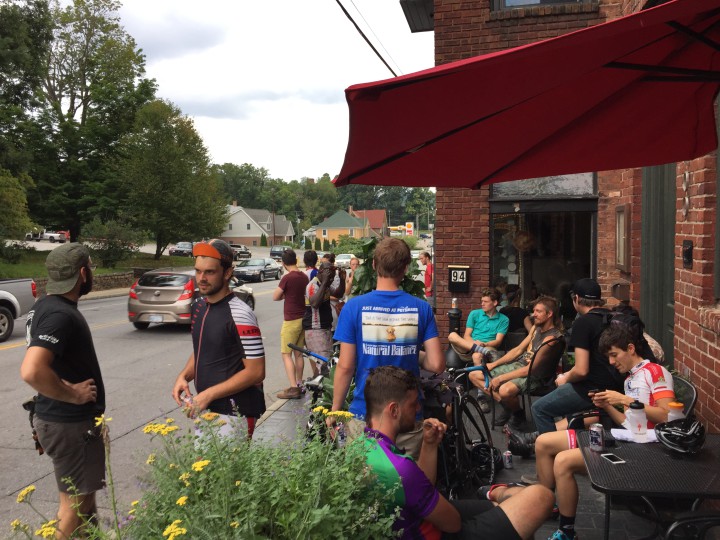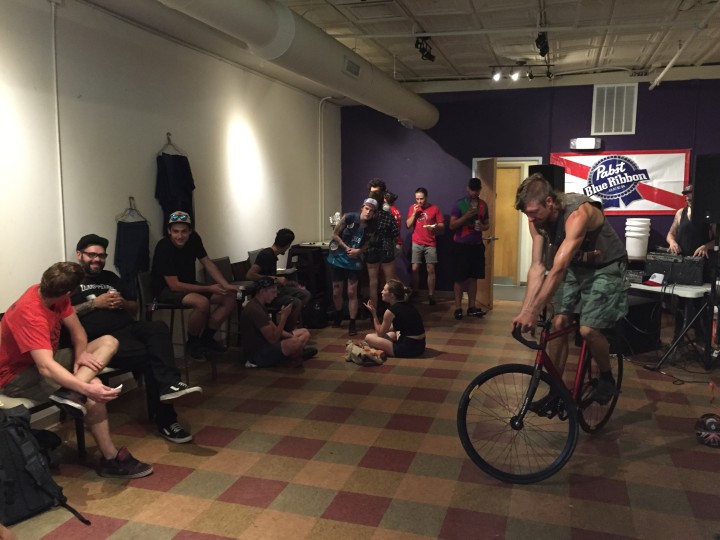Alleycat racing is a genre of bicycle racing that originated among urban bike messengers in the late 1980s in Toronto, Canada. Alleycat races are in many ways the antithesis of the highly organized gran fondo’s and tours which often dominate the cycling scene in Western North Carolina.
Alleycats are at best informal, non-sanctioned events that pull from a more diverse base of the local cycling scene, providing riders an opportunity to prove not only who is the fastest, but also who can navigate city streets while devising the best route. Cutoff slacks and jean shorts, fixed gear bicycles, and an array of other mutt bicycle creations provide a stark contrast to the cleaner, spandex-clad aesthetic that dominates cycling today. Riders are not given a prescribed course; instead riders must maneuver between checkpoints, receiving their next destination upon each arrival. There are no closed streets for the race and riders must calculate their optimal route as a function of distance, traffic and bikeability.
Over 30 riders came out on Saturday, Aug. 15, 2015 to participate in the BridgeCat Alleycat. The race, which required a $5 entry fee, a helmet and a digital camera, took riders on an almost-20-mile course that zig-zagged through downtown, the River Arts District, Woodfin and West Asheville.
Starting from Hearn’s Cycling and Fitness on Asheland Avenue, riders advanced their way through a series of nine checkpoints, all of which had to be located either on or under bridges, in keeping with the “BridgeCat” theme of the race. Upon arrival at each checkpoint, riders received a new map pinpointing their next checkpoint. Knowledge of Asheville’s rather esoteric street network was a helpful advantage in the race. Often the amount of climb on a particular route mattered more than the distance.
In addition to the checkpoints, riders occasionally received picture tasks, which required them to take a photo of their bike in front of a particular location.
While the course was officially just under 20 miles, some riders tacked additional miles for missed stops or for getting lost. King James Public House served as the end point for the ride. Riders trickled in to have their routes and pictures validated while organizers tallied the results. The race results featured a number of ties, and two of the top four spots went to riders from outside of Asheville.










Cycling should not be a sport that is only for those with the shiniest and newest bike, this is a great! It should be about culture, friends, the wind on your face and free transportation. Bike snobs have turned cycling into a gear-centric sport, which is ridiculous. I don’t care what kind of bike you ride, in fact I love seeing people on old bikes. Ride on brothers and sisters.